Connecting with the land: ‘Our arid bush paradise’
Posted on 10 March, 2022 by Ivan
Reconnecting with our local landscape has been a common theme over the past few years, especially during COVID-related lockdowns and restrictions. In many ways, we were left with little choice but to connect with places close to home, or in many cases, our own backyards.
Connecting with nature and our surrounding landscape has proved to be vital during times of stress, anxiety and uncertainty, and has proven links to mental health and feelings of belonging. Nature can generate a multitude of positive emotions, such as calmness, joy and creativity and can facilitate concentration.
We recently discovered a great blog post that does a lovely job of summarising the joys and challenges of connecting with our landscape, from a perspective of a landholder and farmer in the Mount Alexander region. The article was written by Katie Finlay at Harcourt Organic Food Co-op. Katie and Hugh’s farm has been part of several Connecting Country projects over the years, and provides an inspiring demonstration of sustainable land management.
Please enjoy Katie’s article below, courtesy of the Grow Great Fruit blog. To visit the blog – click here
Our arid bush paradise
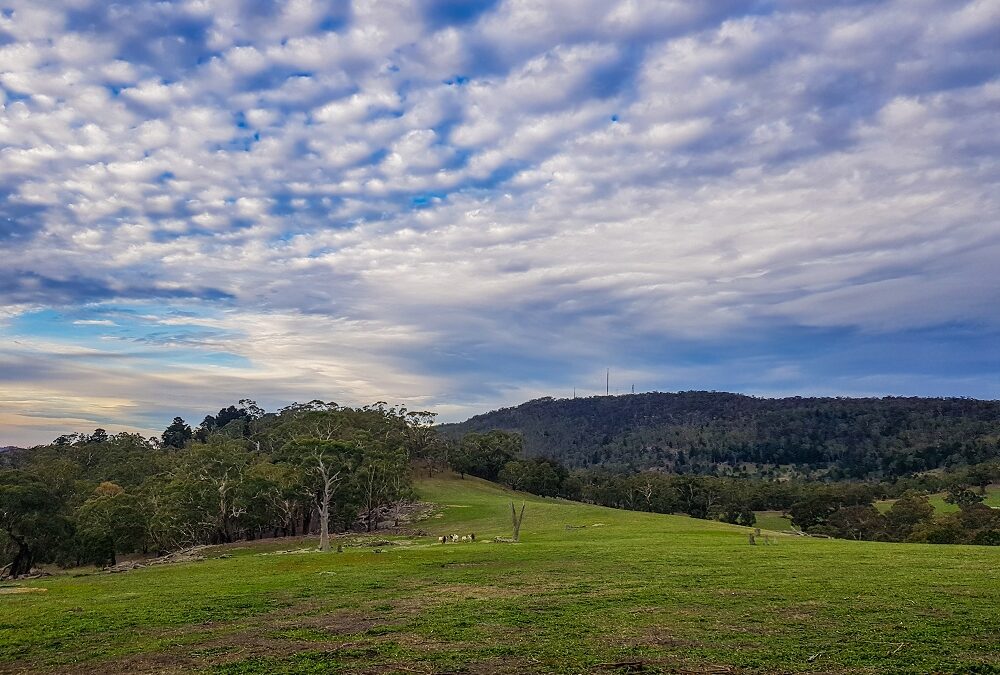
We live in a pretty arid part of the world, but living through the COVID-19 era, we’ve come to appreciate our landscape in new ways.
We live on Dja Dja Wurrung land, on the side of the small but majestic Leanganook. That’s the Dja Dja Wurrung name for Mount Alexander, and it means ‘his teeth’. You can watch this short video to find out more about the significance of the name.
Our farm borders the Leanganook (Mount Alexander) Regional Park, so our backyard is pretty big.
We go for a lot of walks on the mountain, and it’s always spectacular and calming. During lockdowns, we (and everyone else) weren’t able to leave home, so we spent even more time than usual in the bush.
Sharing our backyard with you
If you live in the city or a regional town it can be hard enough at the best of times to get into wild nature.
We know from first-hand experience that being in the bush is incredibly good for the soul. Even though photos are a poor substitute for the actual smells, sounds, and feel of being in the bush, the least we can do is share our walks with you.
So, here’s a couple of our favourite trees we visit regularly.
They have a way of reducing us to instant insignificance on the planet and putting any niggling worries into perspective.
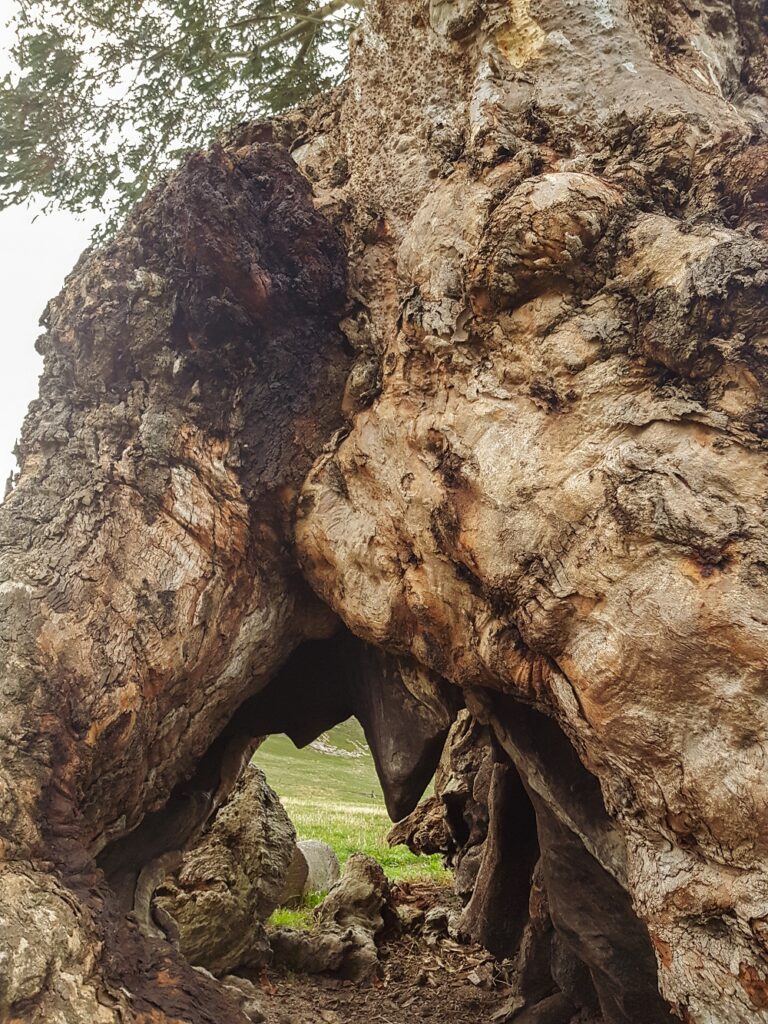
Just being in their presence makes us wonder how long these trees have been here.
Who have they sheltered? What storms have they weathered? Who (and what) has wandered past in the last couple of hundred years?
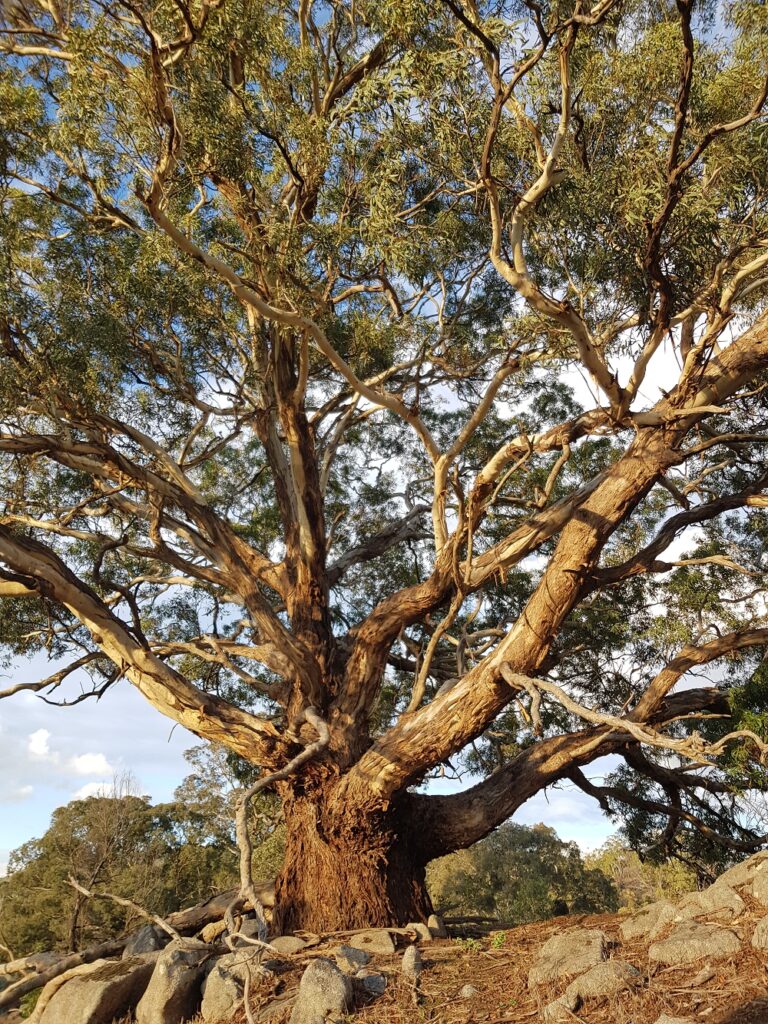
Granite bones
Our mountain is made of granite. Apart from providing the mineralisation that makes this region such a great place to grow fruit, it’s also a beautiful stone.
Granite stone formations can be huge, with lots of mysterious cracks and crevices. Granite doesn’t form caves as such, but it’s not at all unusual to find openings big enough to imagine someone or something seeking shelter inside at some time in history.
We always keep clear of the rocks. It feels like an invasion of privacy to poke about too closely, so we keep a respectful distance from their mysterious inner life.
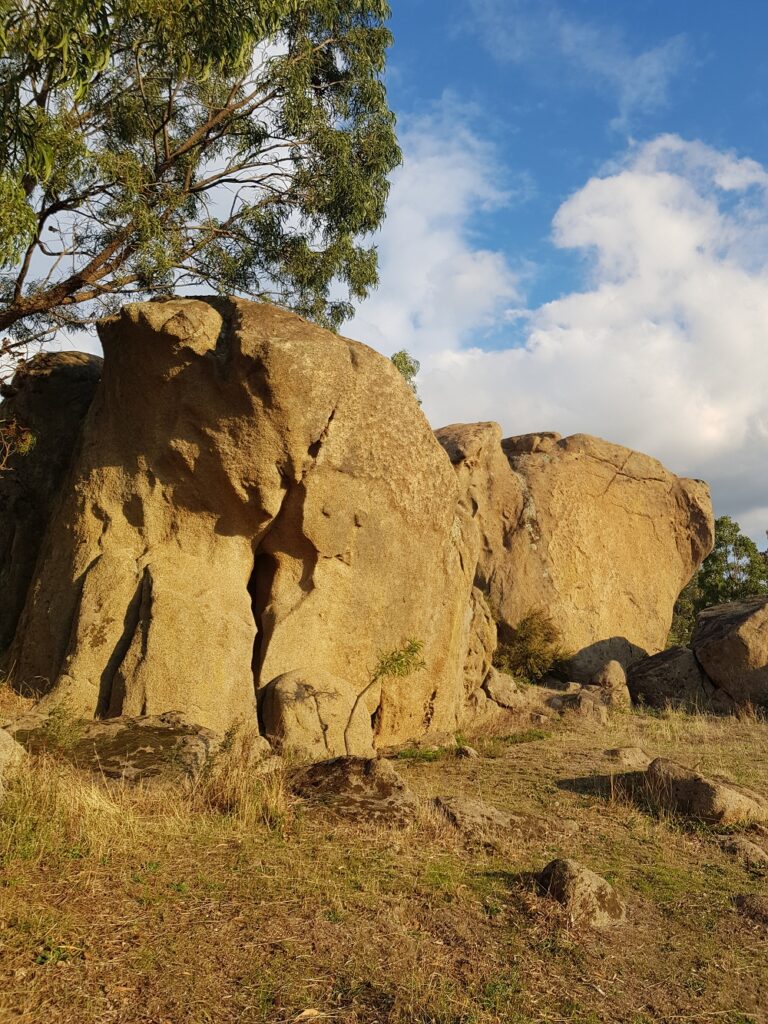
Things that shouldn’t be there
Less inspiring is the amount of feral and invasive flora and fauna we come across in walks on our beautiful mountain, like this herd of feral goats.
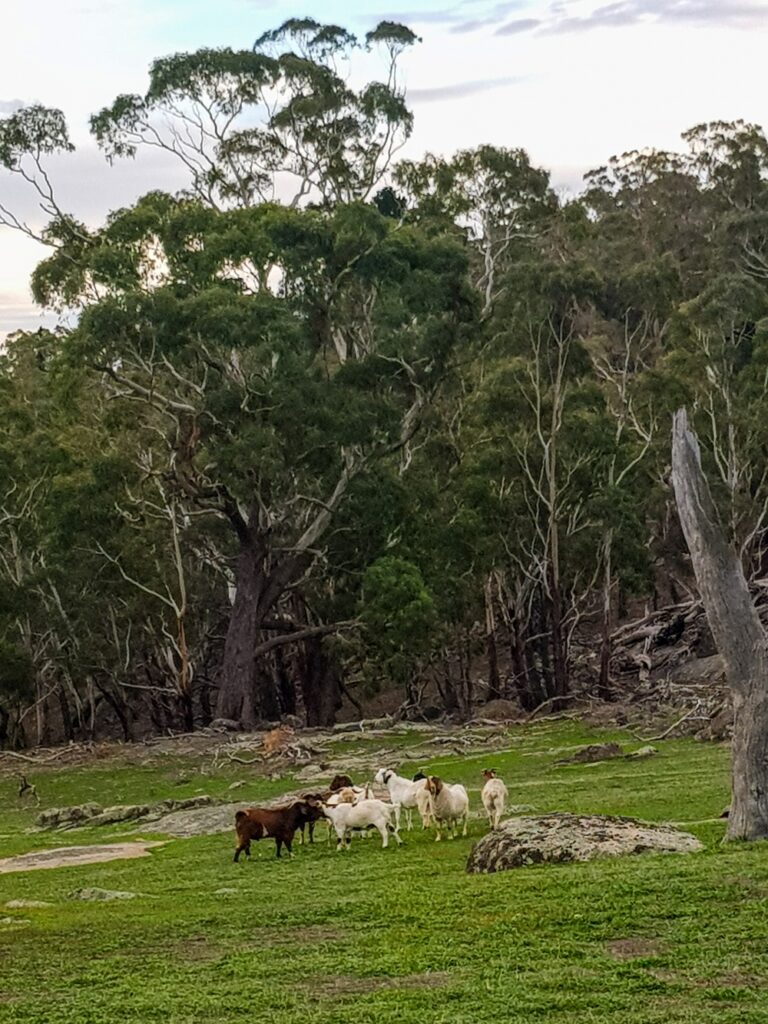
As beautiful and useful as goats are as animals, they need managing. They can even be quite good companions to fruit trees if they’re managed properly.
This lot has escaped from a farm somewhere (they have eartags) and taken up residence on the mountain. They go wherever they want, eat whatever they want, and seem to be breeding at an alarming rate.
This is a fragile and arid landscape, which has evolved with our native animals like kangaroos. While we’ve fenced to keep kangaroos off our farm (where they annoy us by competing for grass with the cows and damaging fruit trees), this is their land. They are perfectly evolved to live harmoniously here in the bush.
We kind of figure it’s up to us to exclude them from the farm, not try to get rid of them altogether, so kangaroo fencing is definitely the solution.

In the meantime, when we’re walking in their patch, we’re perfectly happy to admire them from a distance, and let them be!
Katie Finlay
Grow Great Fruit






Leave a Reply